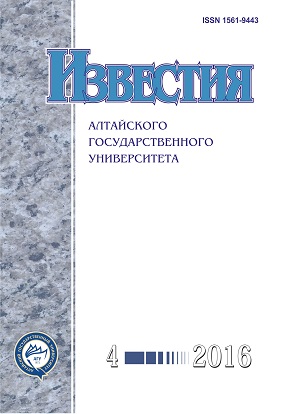Chief Executives in the Russian Federation: the Socio-Demographic Analysis (1995)
Abstract
The article analyzes the socio-demographic characteristics of the heads of executive authorities of the Russian Federation. The focus is made on the socio- demographic indicators of the governors and presidents of republics after the election campaigns of 1991– 1995. Drawing biographical sources, the author provides a quantitative analysis of the demographics of heads of executive authorities of the Russian Federation. The article deals with the dynamics of the governors’ composition in Russia, the features of its renovation. The author touched upon such issues as gender and age structure, place of birth, social origin, the level and quality of education, the availability of academic degrees, party affiliation, as well as the scope of activities of heads of executive author ities in the regions of Russia during the lifetime and at the time of taking off ice. It is shown that this st rat u m is dominated by the representatives of technical specialties, but their professional implementation is various. The chief executives of the Russian Federation is the man of a mature age. As a result, during the formation of the Russian Federation a certain social and professional image of the governor was formed, the definition was given to the main channel and the mechanism of recruitment of the regional elite, identification was made of the level and nature of its mobility. DOI 10.14258/izvasu(2016)4-18Downloads
Metrics
References
Гаман-Голутвина О.В. Политические элиты России. Вехи исторической эволюции. - М., 1998.
Шентякова А.В. Проницаемость каналов рекрутирования в политическую элиту // Вестник СПбГУ Сер. 6. 2015. Вып. 3 [Электронный ресурс]. - URL: http://vestnik.spbu.ru/html15/s06/s06v3/05.pdf.
Крыштановская О.В. Анатомия российской элиты. - М., 2005.
Глухова А.В. Региональная элита в зеркале общероссийских политических процессов // Социально-экономическая реальность и политическая власть. - М., 2004.
Новикова О.С., Горбунов Ю.В. Формирование гражданского общества: место региональных элит в этом процессе // Социально-экономическая реальность и политическая власть. - М., 2004.
Кто есть кто в России. Исполнительная власть / под ред. К. Щеголева. - М., 2014.
Кто есть кто в мире / под ред. Е.В. Коровкина, Г.П. Шалаева. - М., 2004.
Кто есть кто в России [Электронный ресурс]. - URL: http://www.wiw-rf.ru/members/person_33567.html.
Власть-2010. 60 биографий. - М., 2010.
Меженина О.В. Социально-демографический портрет региональных руководителей Российской Федерации начала XXI века // Российский политический процесс в региональном измерении: история, теория, практика: сборник материалов Всероссийской научно-практической конференции / под ред. Я.Ю. Шашковой, Т.А. Асеевой. - Барнаул, 2016.
Губернаторы.ру. Информационно-аналитический ресурс [Электронный ресурс]. - URL: http://www. governors.ru/?regmode=fio&razdel=main.
Меженина О.В. Главы исполнительной власти в субъектах Российской Федерации: социально-демографический анализ (2015 г.) // Известия Алтайского гос. ун-та. - 2015. - № 2/1 (86). DOI: 10.14258/izvasu(2015) 2.1-44
Крыштановская О.В. Социологический портрет бизнес-элиты // Элита общества [Электронный ресурс]. - URL: http://esj.ru/2005/02/03/sociologicheskij/.
Izvestiya of Altai State University is a golden publisher, as we allow self-archiving, but most importantly we are fully transparent about your rights.
Authors may present and discuss their findings ahead of publication: at biological or scientific conferences, on preprint servers, in public databases, and in blogs, wikis, tweets, and other informal communication channels.
Izvestiya of Altai State University allows authors to deposit manuscripts (currently under review or those for intended submission to Izvestiya of Altai State University) in non-commercial, pre-print servers such as ArXiv.
Authors who publish with this journal agree to the following terms:
- Authors retain copyright and grant the journal right of first publication with the work simultaneously licensed under a Creative Commons Attribution License (CC BY 4.0) that allows others to share the work with an acknowledgement of the work's authorship and initial publication in this journal.
- Authors are able to enter into separate, additional contractual arrangements for the non-exclusive distribution of the journal's published version of the work (e.g., post it to an institutional repository or publish it in a book), with an acknowledgement of its initial publication in this journal.
- Authors are permitted and encouraged to post their work online (e.g., in institutional repositories or on their website) prior to and during the submission process, as it can lead to productive exchanges, as well as earlier and greater citation of published work (See The Effect of Open Access).








